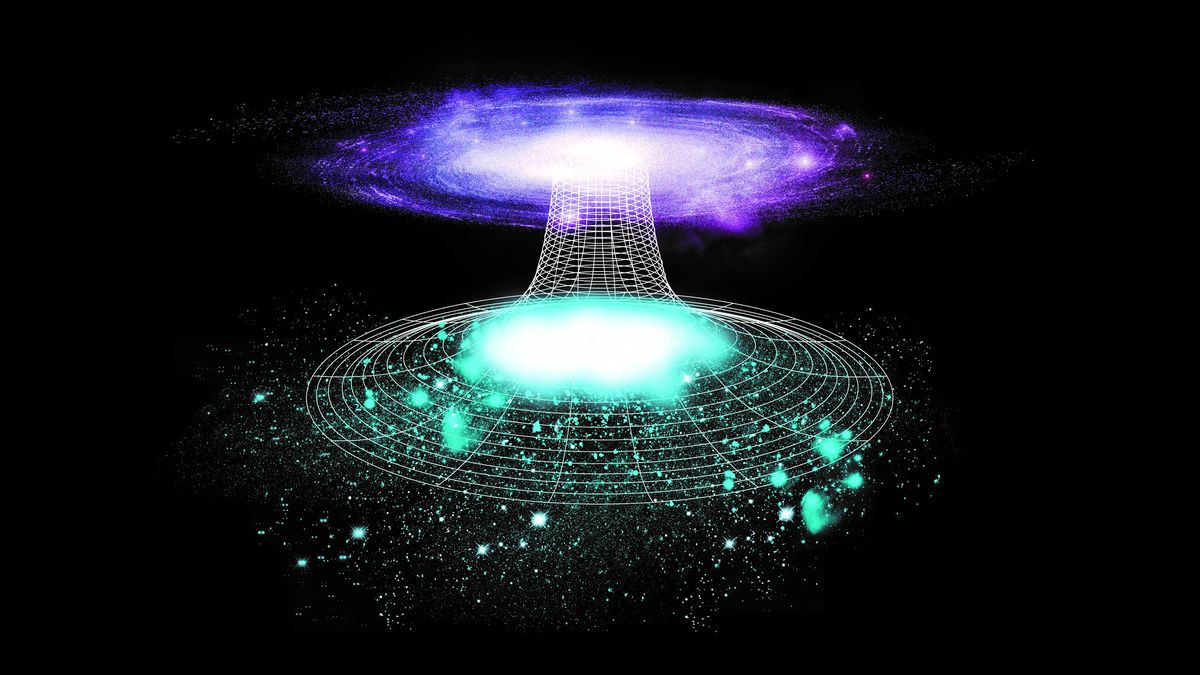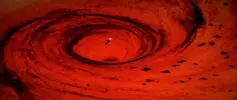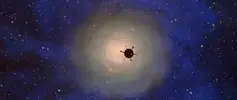Because a thermal-equilibrium state is time-reversal-invariant, Stephen Hawking argued that the time reversal of a black hole in thermal equilibrium results in a white hole in thermal equilibrium (each absorbing and emitting energy to equivalent degrees).

 en.wikipedia.org
en.wikipedia.org
NEVER trust the textbooks, even the ones written by great scientists. In his celebrated 1972 tome Gravitation and Cosmology, Nobel prizewinning physicist Steven Weinberg called the existence of black holes “very hypothetical”, writing that “there is no [black hole] in the gravitational field of any known object of the universe”. He was dead wrong. Radio astronomers had already been detecting signals from matter falling into black holes for decades without realising. Today we have lots of evidence that the sky is teeming with them.

 www.newscientist.com
www.newscientist.com
Even if large white holes did form, they probably wouldn't hang around too long. Any outgoing matter would collide with the matter in orbit, and the system would collapse into a black hole. "A long-lived white hole, I think, is very unlikely," said Hal Haggard, a theoretical physicist at Bard College in New York.
Ever since Stephen Hawking realized in the 1970s that black holes leak energy, physicists have debated how the entities could possibly shrivel up and die. If a black hole evaporates away, many ask, what happens to the internal record of everything it swallowed? General relativity won't let the information out and quantum mechanics forbids its deletion.
"How does a black hole die? We don't know. How is a white hole born? Maybe a white hole is the death of a black hole," Rovelli said. "The two questions join nicely, but you have to violate the general relativity equations in the passage from one to the other."
Rovelli is a founder of quantum loop gravity, an incomplete attempt to move beyond general relativity by describing space itself as built from Lego-style particles. Guided by tools from this framework, he and others describe(opens in new tab) a scenario where a black hole grows so small that it no longer obeys the common-sense rules of stars and billiard balls. On the particle level, quantum randomness takes over and the black hole could transform into a white hole(opens in new tab).

 www.space.com
www.space.com
--------------------------------------------------------------------------------------------------------------------------------
Nonsense.......................??

White hole - Wikipedia
NEVER trust the textbooks, even the ones written by great scientists. In his celebrated 1972 tome Gravitation and Cosmology, Nobel prizewinning physicist Steven Weinberg called the existence of black holes “very hypothetical”, writing that “there is no [black hole] in the gravitational field of any known object of the universe”. He was dead wrong. Radio astronomers had already been detecting signals from matter falling into black holes for decades without realising. Today we have lots of evidence that the sky is teeming with them.

If you think black holes are strange, white holes will blow your mind
White holes are black ones in reverse, spewing out matter– and they could give us our first glimpse of the quantum source of space-time, says physicist Carlo Rovelli
WHY WHITE HOLES MAY NOT EXIST
While general relativity describes white holes in theory, no one knows how one might actually form. A black hole cordons off its bit of space when a star collapses into a tiny volume, but playing this video backwards doesn't make physical sense. An event horizon exploding into a functional star would look a bit like an egg unscrambling itself — a violation of the statistical law demanding that the universe gets messier over time.Even if large white holes did form, they probably wouldn't hang around too long. Any outgoing matter would collide with the matter in orbit, and the system would collapse into a black hole. "A long-lived white hole, I think, is very unlikely," said Hal Haggard, a theoretical physicist at Bard College in New York.
WHY WHITE HOLES MIGHT EXIST
For a while, white holes seemed to share the fate of wormholes — mathematically permissible contortions of space-time likely prohibited by reality. But in recent years, some physicists have brought white holes back in an attempt to save their darker siblings from an unseemly death.Ever since Stephen Hawking realized in the 1970s that black holes leak energy, physicists have debated how the entities could possibly shrivel up and die. If a black hole evaporates away, many ask, what happens to the internal record of everything it swallowed? General relativity won't let the information out and quantum mechanics forbids its deletion.
"How does a black hole die? We don't know. How is a white hole born? Maybe a white hole is the death of a black hole," Rovelli said. "The two questions join nicely, but you have to violate the general relativity equations in the passage from one to the other."
Rovelli is a founder of quantum loop gravity, an incomplete attempt to move beyond general relativity by describing space itself as built from Lego-style particles. Guided by tools from this framework, he and others describe(opens in new tab) a scenario where a black hole grows so small that it no longer obeys the common-sense rules of stars and billiard balls. On the particle level, quantum randomness takes over and the black hole could transform into a white hole(opens in new tab).

White holes: What we know about black holes' neglected twins
White holes are returning to the experimental spotlight.
--------------------------------------------------------------------------------------------------------------------------------
Nonsense.......................??


